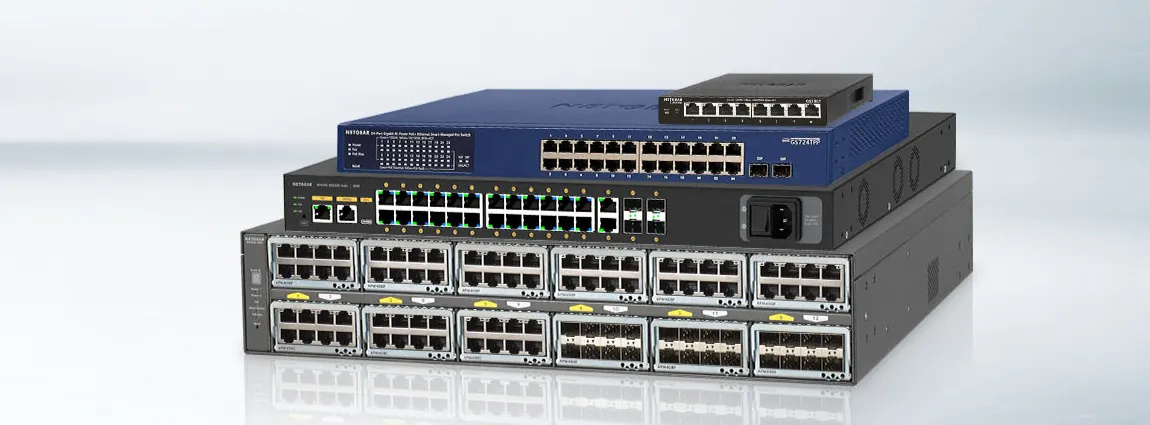Network switches are essential for connecting devices and ensuring smooth data transfer within a network. When choosing a switch, two common types to consider are desktop switches and rack-mount switches. Each type of switch has unique features, benefits, and applications, and is suitable for different scenarios. Let’s explore the differences between them to help you make the right choice.
1. Size and design
Desktop Switch: Desktop switches are small and lightweight and can be placed on a table, shelf, or other flat surface. Their small size makes them ideal for home offices, small businesses, or temporary setups.
Rack-mount switches: Rack-mount switches are larger, more rugged, and fit into a standard 19-inch server rack. They are commonly used in data centers, enterprise networks, and IT rooms where multiple devices need to be organized efficiently.
2. Number of ports and scalability
Desktop switches: Typically offer 5 to 24 ports and are suitable for small networks. They are ideal for connecting a limited number of devices, such as computers, printers, and IP phones.
Rack-mount switches: Usually equipped with 24 to 48 ports, some models allow modular expansion. These switches are more suitable for large networks with a large number of devices and high scalability requirements.
3. Power and performance
Desktop switches: Desktop switches are simple in design, low in power consumption, and sufficient for basic network needs like file sharing and internet connectivity. They may lack the advanced features found in larger switches.
Rack-mount switches: Offer higher performance, advanced features such as VLAN, QoS (Quality of Service), and Layer 3 routing. These switches are designed to handle high volumes of traffic and high-speed data transfer in demanding environments.
4. Installation and fixing
Desktop switches: Desktop switches are easy to set up and use and require no special installation. They are plug-and-play devices, making them convenient for non-technical users.
Rack-mount switches: These need to be installed in a server rack, which allows for better organization and cable management. This makes them ideal for structured network environments, but may require more technical expertise.
5. Heat dissipation and durability
Desktop switches: Typically fanless and rely on passive cooling, so they are quieter but less suitable for workloads or environments with higher temperatures.
Rack-mount switches: Equipped with active cooling systems such as fans, they ensure reliable operation even under heavy use. They are durable and suitable for long-term use in professional environments.
6. Price
Desktop switches: More affordable due to their simpler design and smaller size. They are cost-effective for smaller networks with lower requirements.
Rack-mount switches: These are pricier but offer advanced features and scalability, making them a better investment for mid- to large-sized businesses.
Which One Should You Choose?
Choose a desktop switch if:
You need a small network for your home or small office.
You prefer a compact, easy-to-use solution.
Budget is the primary consideration.
Choose a rack-mount switch if:
You manage a medium to large business or enterprise network.
You need advanced functionality, scalability, and better organization.
You have the technical expertise required for server racks and installations.
Final Thoughts
Understanding the differences between desktop and rack-mount switches can help you make an informed decision based on network size, complexity, and growth potential. Whether it’s a simple setup or an enterprise-level solution, choosing the right switch is critical to network efficiency and reliability.
Post time: Dec-31-2024




